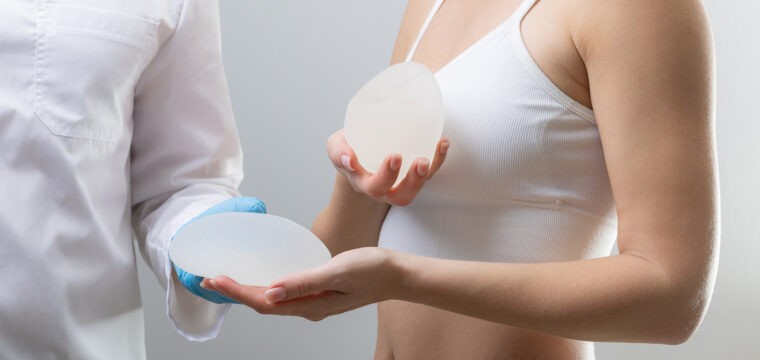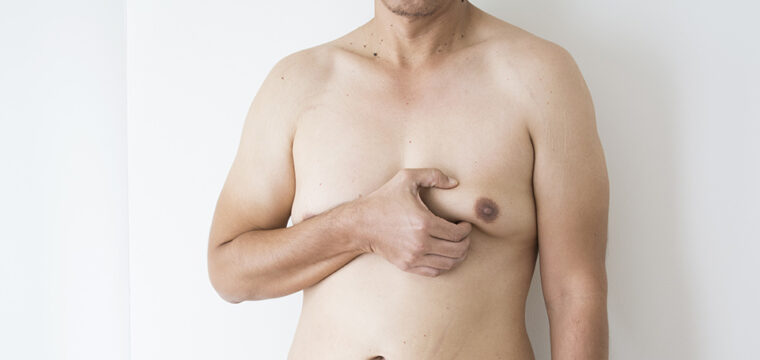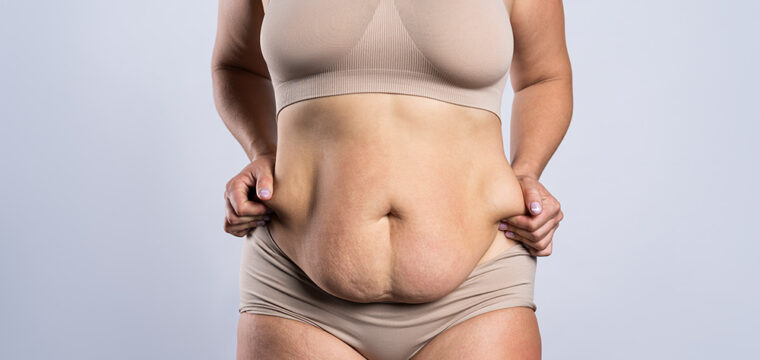- 16 September 2025
- Mr A. Siddiqui
Last updated on October 1, 2025
Table of Contents
ToggleIf you’ve noticed a flap of excess skin and fat hanging over your lower abdomen, you may be dealing with what’s commonly referred to as an apron belly. This condition occurs when excess fat and skin hang over the lower abdomen, resembling an apron.
At Breast & Body UK, we see many clients experiencing this concern, often after weight loss, pregnancy, or natural ageing. While it can affect self-confidence and comfort, there are a range of ways to manage it — from lifestyle changes and targeted exercises to surgical procedures like liposuction.
What is an Apron Belly?
An apron belly, or panniculus, is a flap of excess skin, tissue, and fat that drapes over the lower abdomen. Depending on its severity, it can cover part of the pubic area, thighs, or even extend downwards further.
This condition can develop after:
- Significant weight gain or weight loss
- Pregnancy, particularly multiple pregnancies
- Age-related changes in skin elasticity
- Genetics, where some people are predisposed to storing fat in the abdominal area
Unlike general belly fat, apron belly involves both fat deposits and stretched skin, which means it may not always respond to diet and exercise alone.
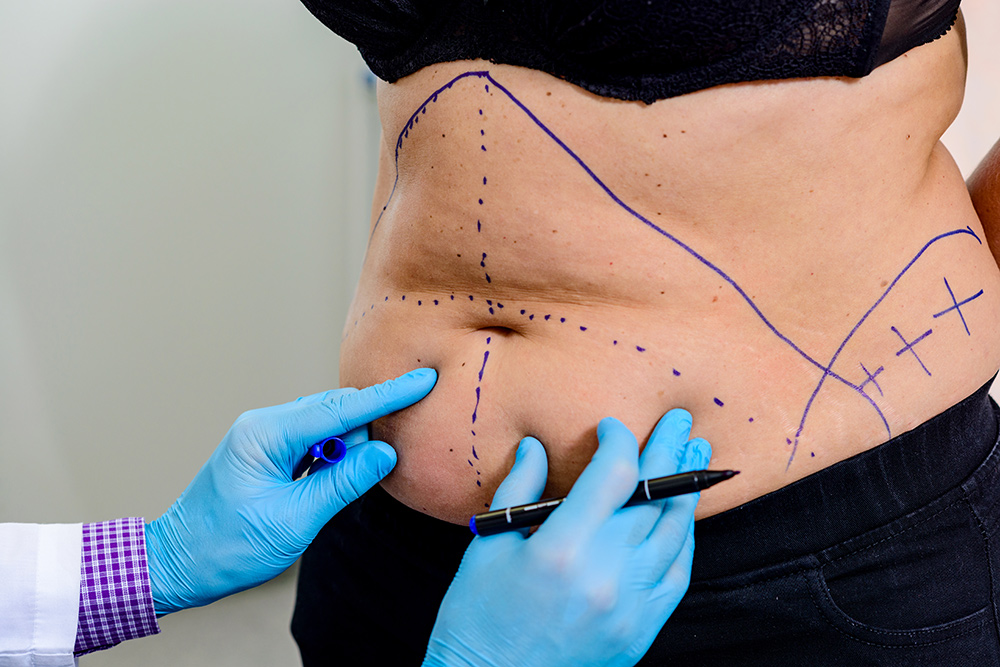
What Causes Apron Belly?
There are several factors that contribute to apron belly:
Weight Fluctuations
Rapid weight gain stretches abdominal skin, while weight loss can leave loose, sagging skin.
Pregnancy
The abdominal wall expands significantly, and for some women, the skin does not fully retract postpartum.
Genetics
Body shape and fat distribution play a major role in whether an apron belly forms.
Ageing
Reduced collagen and skin elasticity make sagging more likely over time.
Lifestyle Factors
Poor diet, lack of exercise, and smoking can weaken connective tissue and contribute to fat storage.
Types of Apron Belly
Apron belly is classified based on how far the panniculus extends:
Grade 1 – Limited to the pubic area.
Grade 2 – Extends to the upper thigh.
Grade 3 – Covers the mid-thigh.
Grade 4 – Extends to the knees.
Grade 5 – Reaches the lower legs.
Knowing the type helps determine the most appropriate treatment approach.
Challenges of Living with an Apron Belly
An apron belly can be more than an appearance concern. Some common issues include:
Hygiene difficulties
Moisture and sweat trapped under the fold can lead to rashes, irritation, and infections.
Lower back pain
Extra weight can strain the spine and muscles.
Clothing discomfort
Finding properly fitting clothes can be difficult.
Emotional impact
Many people feel self-conscious or restricted in their lifestyle.
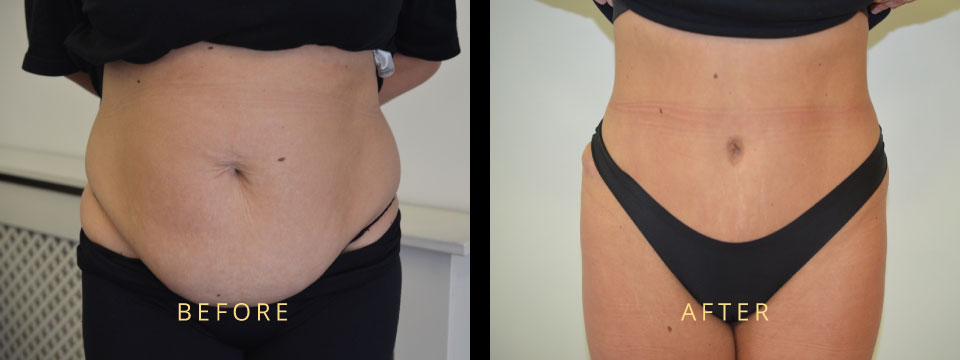
How to Get Rid of Apron Belly
There is no universal solution to managing apron belly (also called panniculus), as the most effective approach depends on the severity, underlying cause, and individual goals. Treatment pathways typically fall into non-surgical and surgical categories, with many people using a combination of strategies to achieve optimal results.
1. Lifestyle Changes
For those with mild apron belly, small but consistent lifestyle adjustments can make a noticeable difference. While these changes won’t remove excess skin, they can reduce fat accumulation and support overall health:
Balanced diet: A nutrition plan rich in lean protein, whole grains, vegetables, and fibre encourages gradual fat loss and prevents additional weight gain. Reducing refined sugars and processed foods can also help limit abdominal fat storage.
Regular exercise: Although targeted fat loss (spot reduction) isn’t possible, a consistent routine helps with overall weight management. Over time, this can reduce fat beneath the pannus.
Hydration: Drinking adequate water aids skin elasticity, which can minimise sagging appearance. Proper hydration also helps regulate metabolism.
Posture improvement: Strengthening the core and improving posture can reduce the visual prominence of apron belly by holding the abdominal wall tighter.
2. Exercises for Apron Belly
While exercise won’t directly remove skin folds, it is critical for building muscle tone, enhancing body composition, and supporting fat reduction. Specific movements include:
Planks: Strengthen the abdominal wall and stabilise the core.
Leg raises: Engage the lower abdominal region, where apron belly is most pronounced.
Cardio workouts: Activities such as running, cycling, swimming, or rowing burn calories and support fat reduction.
Strength training: Building lean muscle mass increases basal metabolic rate, helping long-term fat management.
Functional core work: Exercises like Russian twists, dead bugs, or Pilates-based routines can improve abdominal strength and posture.
It’s important to pair exercise with dietary discipline for sustained results.
3. Apron Belly After Weight Loss
A common scenario is apron belly after significant weight loss. Even after fat reduction, skin stretched over many years often loses elasticity and does not contract. The larger the panniculus (especially Grades 3–5), the more difficult it is to resolve without surgical help.
Mild skin laxity: May respond to skin-tightening treatments
Moderate to severe cases: Surgical removal is often the only definitive solution, particularly when the pannus causes rashes, infections, or mobility issues.
Surgical Options for Apron Belly
For those seeking more definitive and transformative results, surgical intervention is often recommended. These procedures are highly individualised and should be assessed by a qualified cosmetic or plastic surgeon.
Abdominoplasty (Tummy Tuck)
- Removes excess skin and tightens abdominal muscles.
- Particularly effective for larger panniculus cases where stretched skin hangs below the pubic area.
- Can relieve skin irritation, rashes, or difficulty with hygiene.
Liposuction for Apron Belly
If stubborn fat is the primary concern (with minimal loose skin), liposuction may be an effective option. At Breast & Body UK, surgeons may recommend one of several advanced techniques:
Traditional (Suction-Assisted) Liposuction
Fat is removed through a thin cannula. Effective for moderate fat deposits.
VASER Liposuction
Ultrasound-assisted technology breaks down fat before removal, allowing precision contouring and skin retraction.
360-Degree Liposuction
Targets the entire midsection (abdomen, flanks, and lower back) for a more balanced, sculpted appearance.
In some cases, liposuction is performed together with a tummy tuck for patients requiring both fat removal and significant skin tightening.
Managing Apron Belly: Which Option is Best?
Mild cases (Grade 1–2): Lifestyle changes, targeted exercises, and non-surgical skin tightening treatments may be sufficient.
Moderate to severe cases (Grade 3–5): Surgery is often the most effective solution, either through abdominoplasty, liposuction, or a combination of both.
After major weight loss: Surgery may be the only reliable method to address redundant skin folds.
The best option depends on your goals, medical suitability, recovery expectations, and budget. Consulting with an experienced surgeon ensures that you select the approach most aligned with your health and lifestyle.
Consulting with a Leading Plastic Surgeon at Breast & Body Clinic UK
An apron belly is a common yet often misunderstood condition that can affect both physical comfort and confidence. While healthy lifestyle changes and exercises are important for long-term management, many people benefit from surgical solutions such as liposuction or abdominoplasty for lasting results.
At Breast & Body UK, procedures are tailored to each patient’s unique body type, goals, and health profile, ensuring both safety and natural-looking outcomes.
If you’re exploring options, we encourage you to book a free consultation with our expert surgeons. During your consultation, we’ll assess your concerns, discuss your goals, and provide a tailored recommendation.
FAQs
What is an apron belly and what causes it?
An apron belly, also called a panniculus, refers to excess skin and fat that hangs down from the lower abdomen, resembling an apron. It often develops due to factors like weight gain, significant weight loss, pregnancy, or ageing, all of which can stretch the abdominal skin and tissues beyond their ability to retract.
Can exercises alone get rid of an apron belly?
While exercises like planks, leg raises, and cardio can strengthen the core and reduce overall body fat, they cannot directly remove an apron belly. This is because loose skin and stretched tissue usually require surgical or medical intervention for a lasting improvement.
Why do I still have an apron belly after weight loss?
After losing a significant amount of weight, the fat may be reduced but the stretched skin often remains, leaving behind the “apron-like” fold. The skin loses elasticity with age and prolonged stretching, which is why surgery is sometimes the only effective solution.
What are the surgical options for treating apron belly?
Common surgical procedures include abdominoplasty (tummy tuck), which removes excess skin and tightens abdominal muscles, and liposuction, which targets stubborn fat deposits. Depending on severity, surgeons may recommend combining liposuction with a tummy tuck for both fat reduction and skin tightening.
Is liposuction effective for apron belly?
Liposuction can be highly effective for people whose apron belly is primarily due to stubborn fat rather than significant loose skin, but if excess skin is present, a tummy tuck may be needed for optimal results.
The information on the website is for general guidance only and cannot be used as a basis to make a surgical decision, an initial consultation with our doctor is required to help patients make an informed decision before proceeding with any surgical procedure. Any surgical or invasive procedure carries risks. Before proceeding, you should seek the opinion of an appropriately qualified health practitioner
About The Author
Mr A. Siddiqui
Mr Siddiqui is a Consultant Plastic and Cosmetic Surgeon, based at The Countess of Chester Hospital in the Department of Plastic and Reconstructive Surgery. He trained extensively in plastic surgery before becoming a Consultant in the NHS and developing a private practice in Manchester and other areas of the Northwest. He is considered to be one of the top 10 cosmetic surgeons in Manchester.
Categories
- Brachioplasty (3)
- Breast Augmentation (24)
- Breast Health (12)
- Breast Implants (18)
- Breast Lift (10)
- Breast Reduction (14)
- General (2)
- Gynecomastia (2)
- Labiaplasty (2)
- Liposuction (13)
- Mummy Makeover (9)
- Skin Cancer (1)
- Skin Care (1)
- Tirzepatide (1)
- Tummy Tuck (21)
Recent Posts
23 September 2025
16 September 2025
9 September 2025
Liposuction vs. CoolSculpting: How to Choose the Best Option for You








